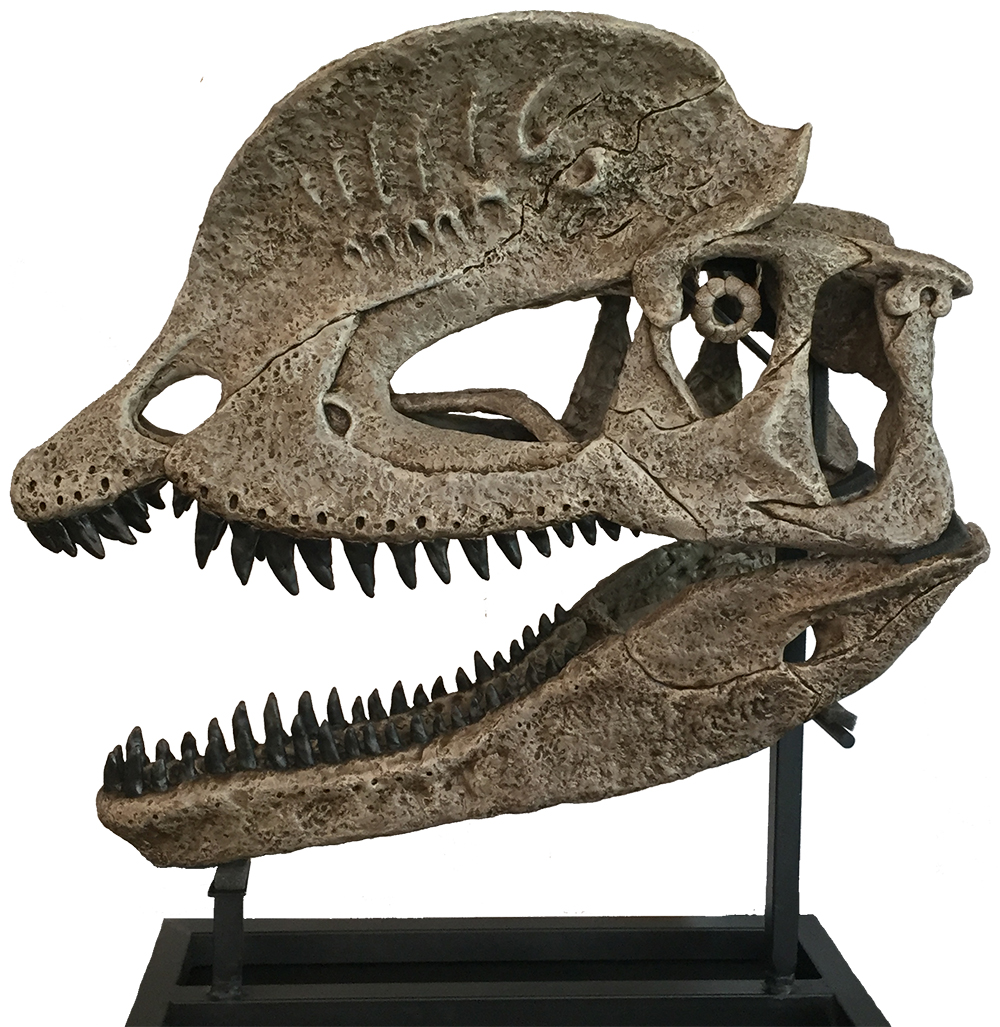Early Jurassic (~193-190 MYA) - theropod dinosaur

Dilophosaurus first gained widespread notoriety after its debut in the first Jurassic Park movie as a small, frilled, poison-spitting predator with a fondness for consuming computer programmers. In real life, Dilophosaurus lacked frills and had no need for poison as it was the apex predator of its Early Jurassic world. Growing up to seven meters in length and weighing around 400 kg, Dilophosaurus was one of the earliest ‘large’ theropods, establishing an ecological niche that would later by filled by other large theropods like Allosaurus, Carcharodontosaurus, and of course, Tyrannosaurus rex. Although smaller than those later forms, Dilophosaurus was the largest known land animal of its time - a time that most continents were still connected to form the supercontinent Pangea. Hence, Dilophosaurus may have had a considerable range. Footprints and trackways attributed to Dilophosaurus are found in western Eurasia as well as eastern and western North America.
In its original (1954) description, Dilophosaurus was misinterpreted to be a specimen of Megalosaurus, the first dinosaur recognized in western science by William Buckland in 1824. It was not until 1970 that a specimen with evidence of skull crests led to the recognition that Dilophosaurus was a separate genus. Its name comes from the Greek words for ‘two’, ‘crests’, and ‘lizard’. In life, these crests were most likely enlarged by keratin and may have played roles in both display and thermoregulation. Some researchers suggest the crests supported stretchable skin that could be inflated during mating displays or used to produce loud vocalizations, although at present there is no direct evidence for these more elaborate crest roles.
Besides its distinctive crests, Dilophosaurus also had an unusual notch in its upper jaw just behind its front teeth. The notch occurs at the junction between the skull’s premaxillary and maxillary bones, which were not as fully fused as they are in most theropod skulls. Yet its jaw was not weak but shows evidence of powerful musculature that would have given Dilophosaurus a formidable bite. Skull bones were riddled by air pockets that helped to protect and reinforce the skull. Its teeth were curved, thin, and most have serrations running along their front and back edges. Interestingly, the teeth in the upper jaw were significantly larger than those in the lower jaw.
Like many theropods, the skull of Dilophosaurus was relatively delicate and is only known from damaged, partial remains. Hence the display is a scientific reconstruction rather than a cast of an intact skull. The earliest discoveries of Dilophosaurus were taken from Navajo land without permission from the tribe. They are now recognized as belonging to the Navajo nation.